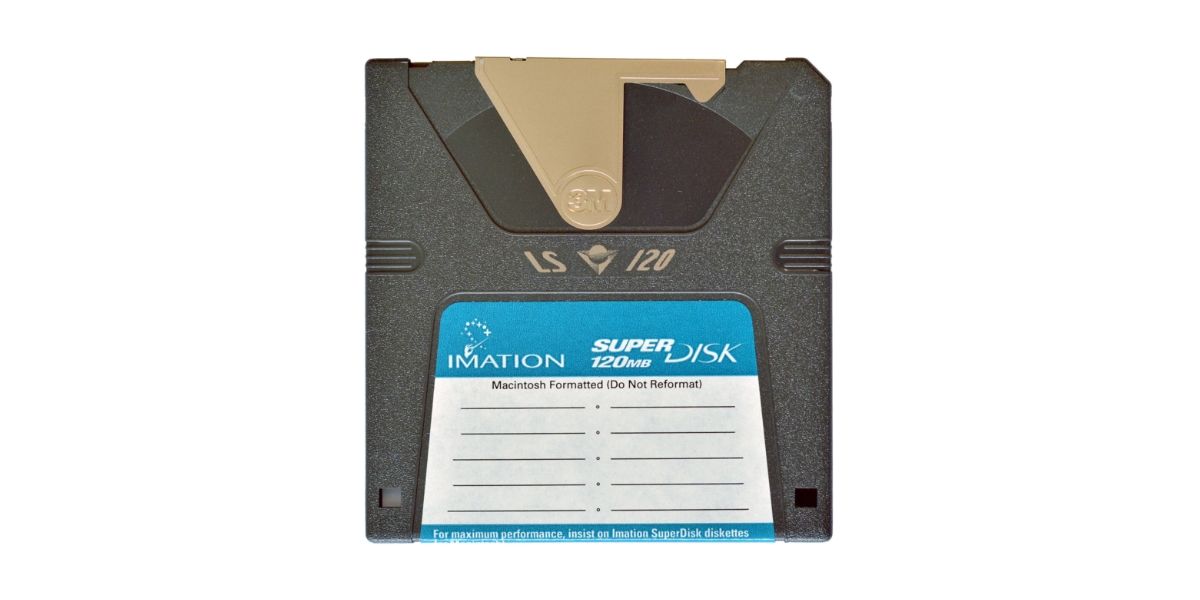Floppy Disk as Icon, Index, Symbol
2022-10-09 ☼ technology ☼ language ☼ blog
I vividly remember the excitement I felt when my dad brought home our new Gateway computer c.1999. Not only because it was such a huge upgrade over our creaky old Intel 486 — finally we were going to be saying goodbye to Windows 3.1, skipping Windows 95 and going straight to 98 — but because it came with a Superdisk drive. This, I was convinced, represented the future. One Superdisk could contain 120MB of data, an unimaginable improvement on the paltry 1.44MB of a regular non-super-disk.

The Superdisk was not the future. It turned out to be the last hurrah of the floppy disk before it was shuffled into obsolescence by the arrival of the CD-R, and our cutting-edge desktop computer quickly became an artefact of a bygone era. But the floppy disk lives on inside our devices, familiar to a generation who have never encountered the actual physical object that the image references: it is the icon that means save.1
In Charles Sanders Peirce’s theory of signs, icon has a narrower meaning: it is a signifier that physically resembles the signified. This distinguishes it from an index (which has some kind of connection) and a symbol (which has no physical resemblence). When it represented the actual place where you wrote your files, the floppy disk was an icon. Then, when the physical format became obsolete, it became an index. Now the floppy disk is moving further into the realm of the symbol, as we store more and more of our documents in the cloud instead of writing them to a physical medium. Indeed, the very idea of a save function is becoming obsolete, now that autosave can preserve the entire history of a file instead of the occasional snapshot when we remember to hit the button.
The anachronistic existence of the floppy disk symbol reminds us that the concepts we use to interact with technology are artificial and transient. Take files: we move them around from folder to folder and forget that the concept of a file (with a fixed spatial location) is a metaphorical layer that we place between user and machine for our own convenience. There are other ways to imagine that interaction, and — as search functionality improves and gains algorithmic augmentation — the notion of a hierarchical arrangement of files may eventually be as redundant as the floppy disk itself.